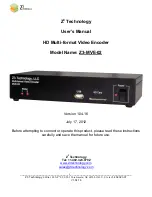
21
If the + sign appears for an extended period of time,
this indicates that not all the buried subjects can be
located using the standard mode. In this case, it is
advised to switch to the analog mode.
4.5
Analog Mode
In the analog mode, the transceiver shows distance
and direction to the subject with the strongest signal
and provides an analog tone.
The analog mode is
mostly used when a clear distinction of multiple
burials is no longer possible in standard mode.
Switching from standard mode to analog mode is
achieved by pressing and holding both keys at the
same time for three seconds.
In analog mode, the direction indication always points
forward, never backwards. Monitor the distance indi-
cation to ensure you are approaching the buried subject!
4.5.1 Multiple Buried Subjects in Analog Mode
If multiple burials are detected in analog mode, an
icon symbolizing multiple burials is shown on the dis-
play
. Additionally, you can also hear the analog
tones. These are helpful in distinguishing the signals
acoustically. The device favors the closest subject.
The detection of multiple burials may vary based on
the subject’s orientation and distance relative to the
rescuer.
Turn off the transceivers of the excavated subjects to
facilitate the further search. If you don’t know the
number of buried subjects, you must search the
entire avalanche path using the search patterns
described in the chapter «Primary Search Phase».
20
S E A R C H M o d e
Vital Data Display
If it is not possible to locate and dig out all buried
subjects at the same time, the buried subjects with
higher chances of survival, indicated by the
-
symbol, should be located and excavated first.
You can find more information on triage criteria and
vital data in the chapter «Triage Criteria and Vital
Data». The actual prioritization of certain buried sub-
jects over others is up to the rescuer.
4.4.4 Limitations
The larger the number of buried subjects is, the more
difficult and time-consuming the exact analysis of the
situation gets, because of overlapping signals. The
more signals there are, the longer the signal overlaps
can last. The capability to automatically detect and
isolate signals from multiple buried subjects is there-
fore limited.
Number of Burials
The calculated number of burials is displayed below
the list of buried subjects. If the transceiver detects
more signals than buried subjects in the list, a + sign
is added behind the number.
Search Suspension
During the search for multiple subjects, signals may
overlap making it impossible to analyze the signal of
a single buried subject. If the signal overlap lasts
several seconds, the rescuer has to interrupt the
process temporarily to avoid deviating from the opti-
mal search path. The PULSE Barryvox
®
will indicate
the necessity to suspend the search by displaying the
word «Stop». Stand still, and do not move until the
word «Stop» disappears, at which time you can con-
tinue to search.
Analog Tone
Outside of the pinpointing range, the Barryvox always
provides the analog tone allowing the rescuer to verify
the number of signals detected by the device. Count-
ing the number of different tones provides the number
of buried subjects.
Analog Mode
If the rescuer detects problems with the analysis of a
multiple burial situation, he or she can always switch
to the analog mode (see chapter «Analog Mode»).
The list of buried subjects is deleted at this time.















































